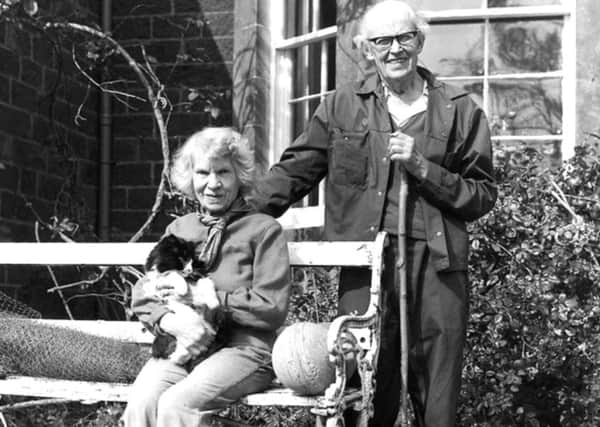The isle of Canna to celebrate its former owner this summer


A symposium will be held on St Columba’s Day on June 9 to mark the 80th anniversary of its purchase by John Lorne Campbell and his wife Margaret Fay Shaw.
The couple went on to amass one of the world’s most important collections of Gaelic and Celtic folklore, songs, stories and images in their home, Canna House, which they later gifted to the National Trust for Scotland.
Advertisement
Hide AdCampbell firmly believed that Canna was once the “summer home” of St Columba, the Irish abbot who helped to spread Christianity throughout what is now Scotland.
The scholar was certain that “Hinba” where Columba landed in 563 was most probably Canna, with the missionary moving to Iona in the early 570s to establish his monastery.
The June event, called the Columba Connection, will host a keynote speech from Professor Rob Dunbar, The Chair of Celtic at Edinburgh University, who will explore the links between Columba, Canna and the Campbells.
Derek Alexander, head of archaeology at National Trust for Scotland, will deliver the archaeological evidence for Columba’s presence on the island on June 9.
Meanwhile, the Rt Rev Brian McGee, Bishop of Argyll and the Isles, will give a blessing at the Celtic cross in the graveyard at St Columba’s chapel.
Campbell, originally from Argyll, is credited with pioneering the modern collection and preservation of Gaelic song and story after moving to Barra in 1933.
Advertisement
Hide AdAn author of several books, he was also renowned for his sound recording archive of some 1,500 Gaelic songs - both from the Hebrides and Nova Scotia - and 350 folktales.
The Ediphone wax cylindar recorder, which he used to capture voices, stories and dialects in the 1930s and 1940s, is on show today in Canna House, where an archive and library of his work remains.
Advertisement
Hide AdHis wife’s photographic work is also a highlight of the collection held on Canna, which today has a population of around 20.
The Campbells gifted Canna to the National Trust of Scotland in 1981 with the island still run as a farm, as the scholar requested.
Visitors on June 9 will also hear archivist Fiona J Mackenzie perform some of the songs collected by the Campbells with the island rangers to lead walks for visitors.
St Columba’s Chapel, the Shearing Shed community space and the Canna House garden will be open on the day. The chapel can sit 45 people but it is hopes many more will visit Canna on St Columba’s Da
